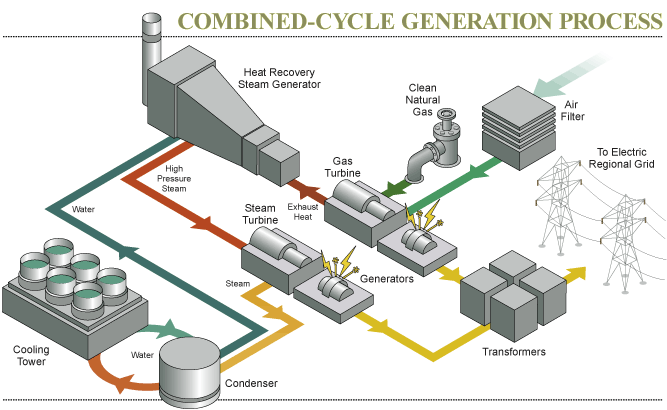The warning for energy producers in Colorado came from Christopher Guith, senior vice president for policy at the U.S. Chamber of Commerce’s Institute for 21st Century Energy.

Expert Panel (L – R): U.S. Congressmen Ken Buck and Ed Perlmutter; Christopher Guith, U.S. Chamber of Commerce Energy Policy; Geoff Houlton, Director of Commodity Fundamentals, Anadarko Petroleum; John R. Grizz Deal, CEO, IX Power Clean Water; Craig Van Kirk, Professor Emeritus Petroleum Engineering, Colorado School of Mines
Guith’s warning was delivered during a panel discussion with a group of oil and gas industry professionals, two U.S. congressmen, petroleum engineering students and professors at the Colorado School of Mines. The topic was “Lifting the Oil Export Ban & What It Means for Colorado.”
The U.S. Chamber’s energy policy chief, who was one of the panelists, offered further observations about the inside-the-government acceleration to shut down the fossil fuel industry in an interview with Oil & Gas 360®.
“This is a very quiet industry. In the operations world, you’ve got truck drivers, geophysicists and engineers.” Guith described how these are not people whose jobs typically train them to go out in public and communicate the benefits of the industry they work in; they’re busy bringing oil and gas from underground formations to market so it can be converted into transportation fuel, electricity and products that every American uses every day.
“There are nine million people employed nationwide in the oil and gas industry; 8%-9% of the workforce in Colorado alone is attached to oil and gas. The supply chain stretches from shore to shore,” Guith told the audience at the Colorado School of Mines.
The climate movement “wants to kill all fossil fuels, not just coal,” Guith said. The executive branch of the government “will do it piecemeal and the president will dare the courts to stop him.” He said the EPA’s Clean Power Plan will effectively force states to shut down all the coal plants, and after the natural gas industry stops celebrating the switch to gas, they’ll begin to realize that natural gas is next up.
Don’t Ever Underestimate the Power of the Environmental Activists
On their website’s home page, Greenpeace has the message in big letters: “Help end the fossil fuel era and protect our public lands. To avoid the worst impacts of climate change, we need to keep the world’s remaining fossil fuels in the ground. That means moving away from coal, oil and natural gas and towards a renewable energy future.”
“[The environmental movement has] come up with a systematic approach to prevent supply and demand by saying ‘we’re going to keep it in the ground’,” Guith told Oil & Gas 360®.
Guith said the environmental movement and U.S. government’s strategy is to stop the use of fossil fuels through the EPA. Here’s how they’re doing it.
“Once the EPA identifies a pollutant as hazardous, by law they have to regulate it,” Guith told Oil & Gas 360®. The EPA identified carbon dioxide as hazardous under the Clean Air Act, and they put in regulations to cut it back.
Guith said the EPA created the standard and then they give the states the mandate to meet their standard. By law, it’s up to the states to achieve the EPA targets.
How will the Environmental Movement Diminish the Natural Gas Business?
Guith says that for utilities who build brand new combined cycle natural gas-fired power plants today, these plants are highly efficient, represent state of the art technology and they are rated as the maximum CO2 output for a modern natgas plant when they are built. It represents 2016’s standard for CO2 emissions from a combined cycle natural gas power plant. But once the EPA triggers the process, they will reset the standard at a mandated 5 or 10-year review. So the maximum will be reset in 2021 or 2025. “And it has to be lower than a 2016 plant, so today’s plants can’t be built new to the same standards in 2021.”
Guith said the goal of the EPA is to get rid of the pollutant, and CO2 is just starting off, so the standards will keep getting more stringent until eventually it will be impossible to have a natural gas power plant that meets the standards. And, by law, the EPA can force whomever is president to comply. The process is self-fulfilling because every five year period the natural gas plant CO2 standard will be ratcheted tighter until, like coal, the standard will be impossible to attain.
Guith says that after the natural gas regulations get started, the refineries and petrochemical plants will become the next targets of more stringent regulation. He says that regulation on these end users will have a direct impact on the demand for oil and natural gas liquids.
Guith says the important issues for oil and gas producers will be (1) gaining access to develop resources on federal lands, (2) the government penalizing the oil and gas industry with more taxes, and (3) the imposition of broader CO2 abatement regulations.
“The plan was to go straight to renewables.” But Guith said that when they realized that won’t work because there is no current grid-scale method to efficiently store the electrons generated by intermittent sources (solar and wind), the thinking was that if we penalize coal and natural gas enough [to force utilities away from using them as fuels] then the development of a storage technology will happen—something that will make renewables work.
ABOVE – VIDEO: Fred Krupp (l), President of the EDF, responds to questions from former Colorado Gov. Bill Ritter (r), at Colorado State University’s 5th Natural Gas Symposium.
At its recent Natural Gas Symposium, Colorado State University’s keynote speaker Fred Krupp, president of the Environmental Defense Fund, said of natural gas, “I don’t consider it a bridge to clean energy, I consider it an exit ramp off of coal and ultimately off of fossil fuels. We have to switch to clean energy; the debate really is about how long that is going to take.”
Already Using Agency Policy to Stop Oil and Gas Development
For the past few years, the BLM has delayed issuing oil and gas leases on federal lands. Recently, after much organized protesting at BLM public comment hearings from the nationally organized anti-fossil fuel groups, leasing in some areas has been halted.
In addition to using the executive branch of the federal government, the anti-fossil fuel movement has found polished advocates in Hollywood. As pitchmen against fossil fuels, well known screen actors employ expert communications skills to broadcast the message. And the public listens.
A Tale of Two Strategies
Strategy Number One – Go Through the Representative Process
On one hand there are numerous examples of the U.S. legislative branch working through the traditional process to vet and attempt to move forward proposed legislation. There is an introduction and review process during which a proposed bill goes to appropriate subcommittee hearings, witnesses give testimony, testimony is recorded in the Congressional Record, the committee members discuss details of the bill and they consider the witness testimony. Revisions take place, followed by additional committee hearings, etc. This can take up to two years. If a bill doesn’t “die in committee”; meaning if a final bill comes out the other end of the two-year process, it is introduced to the full House where it is debated and voted on. If it passes the House it is introduced to the Senate for similar discussion and vote. Then, if it actually passes both houses of Congress, the bill goes on to the president for either his signature or his veto. The American lawmaking process has been taught in junior high and high school civics classes for a couple of centuries. Here’s an example:
U.S. House of Representatives – Press Release
| FOR IMMEDIATE RELEASE January 19, 2016 |
CONTACT: Press Office (202) 226-4972 |
| HEARING: #SubEnergyPower to Examine Two Bills to Counter EPA Regulatory Overreach
The Subcommittee on Energy and Power, chaired by Rep. Ed Whitfield (R-KY), has scheduled a hearing for Tuesday, January 26, 2016, at 10:15 a.m. in room 2123 of the Rayburn House Office Building. The hearing is entitled, “H.R. 3797, the Satisfying Energy Needs and Saving the Environment (SENSE) Act and H.R.__, the Blocking Regulatory Interference from Closing Kilns (BRICK) Act.” H.R. 3797, introduced by Rep. Keith Rothfus (R-PA), would shield the coal refuse industry from the unnecessary and burdensome compliance costs of certain federal regulations and ensure that the coal refuse-to-energy industry continues its vital mission of providing affordable energy and remediating formerly-polluted sites across coal producing regions. H.R.__, the BRICK Act, introduced by committee member Rep. Bill Johnson (R-OH), would delay the Environmental Protection Agency’s “Brick MACT” rule until all judicial review has been completed, protecting businesses from undue costs. “These commonsense bills will protect American businesses from overly burdensome EPA regulations and I’m looking forward to examining these issues in further detail next week,” said Chairman Whitfield. The Majority Memorandum, a witness list, and witness testimony will be available here as they are posted. |
While the official lawmaking process probably deserves its strong comparison to sausage making—long, tedious and ugly—it was designed to take the necessary time to allow for thoughtful consideration by citizen representatives with a great responsibility to those who sent them to Washington. The process was intended to avoid the whims of a potential dictatorial leader, who might be tempted to take policy making into his or her own hands and skip the vetting process by the elected representatives of the people.
Strategy Number Two – Circumvent the Representative Process; Create and Enforce your Own Energy Policies
The nation’s sitting chief executive is a strong advocate of the climate movement’s goal to end the use of fossil fuels. He has chosen to avoid the lengthy and tedious representative policy-making process, and instead to use executive orders and implementation of policies via the long tentacles of the executive branch, illustrated below:
Secretary of the Interior – Press Release
OFFICE OF THE SECRETARY
Date: January 15, 2016
Contact: Jessica Kershaw
Secretary Jewell Launches Comprehensive Review of Federal Coal Program
WASHINGTON – Secretary Sally Jewell announced today that the Interior Department will launch a comprehensive review to identify and evaluate potential reforms to the federal coal program in order to ensure that it is properly structured to provide a fair return to taxpayers and reflect its impacts on the environment, while continuing to help meet our energy needs. This is another step along the path that President Obama announced in Tuesday’s State of the Union address to improve the way we manage our fossil fuel resources and move the country towards a clean energy economy.
Today’s action builds on Secretary Jewell’s call last March for an open and honest conversation about modernizing the federal coal program, which led to a series of public listening sessions across the country in 2015. The listening sessions and public comment period solicited a broad range of responses to complex questions, including: Are taxpayers and local communities getting a fair return from these resources? How can we make coal leasing more transparent and more competitive? How do we manage the program in a way that is consistent with our climate change objectives?
Excerpt from the Secretary of Interior’s Order No. 3338:
Sec. 5 Pause on the Issuance of New Federal Coal Leases for Thermal (Steam) Coal.
Lease sales and lease modifications result in lease terms of 20 years and for so long thereafter as coal is produced in commercial quantities. Continuing to conduct lease sales or approve lease modifications during this programmatic review risks locking in for decades the future development of large quantities of coal under current rates and terms that the PEIS may ultimately determine to be less than optimal. This risk is why, during the previous two programmatic reviews, the Department halted most lease sales with limited exceptions for small sales, emergencies and other situations involving potential economic hardship. Considering these factors and given the extensive recoverable reserves of Federal coal currently under lease, I have decided that a similar policy is warranted here. A pause on leasing, with limited exceptions, will allow future leasing decisions to benefit from the recommendations that result from the PEIS while minimizing any economic hardship during that review.
- Pursuant to my discretionary authority under the Mineral Leasing Act (e.g., 30 U.S.C § 201) and other statutes, and based on the reasons discussed herein, I conclude that further evaluation, additional receipt of public input, and comprehensive consideration of the Federal coal program is warranted, and accordingly, I hereby direct BLM to apply the following limitations on the issuance of Federal coal leases until the completion of the PEIS:
- No new applications for thermal (steam) coal leases or lease modifications will be processed, subject to the enumerated exclusions in Section 6 of this Order; and
- For pending applications, no lease sales will be held, leases issued, or modifications approved for thermal (steam) coal, subject to the enumerated exclusions in Section 6 of this Order. At an applicant’s request, preparatory work on pending applications may continue (including the preparation of NEPA analyses), but no final decision on whether to hold a lease sale will be made unless one of the exceptions listed in Section 6 of this Order applies.
- This pause in holding lease sales, issuing coal leases, and approving lease modifications will apply to applications for both surface and underground thermal coal, but it does not apply to metallurgical coal. Metallurgical coal is produced at far fewer mines and in much smaller quantities than thermal coal, and recoverable metallurgical coal reserves may not be sufficient to support current production levels for that resource during the pause. In addition, metallurgical coal is required for key applications, such as steelmaking, for which substitutes are not readily available. Given that the Federal mineral estate includes comparatively very small quantities of metallurgical coal, we expect potential impacts from any leasing activities for metallurgical coal during the review period to be very limited.
- This pause does not constitute a decision on the merits of any application, but is merely a deferral of the decision to allow the PEIS to be considered in making future final decisions. The pause applies only to the Federal mineral estate administered by the BLM and does not apply to coal leases on tribal or allotted lands, which are regulated by the Bureau of Indian Affairs under a different regulatory structure. The pause applies only to lease sales and modifications. It does not apply to other BLM actions related to the Federal coal program, including the processing and issuance of coal exploration licenses, the issuance of renewal leases when required by the terms of existing leases, and the development and implementation of resource management plans. Similarly, the pause does not apply to any actions undertaken by ONRR, OSMRE, or any other agency, office, or bureau with duties related to the development, production or reclamation of Federal or non-Federal coal resources.
Which Method is Working?
With respect to stopping the use of fossil fuels, strategy number two – put through regulations and circumvent the representative policy making process – has succeeded in accelerating the eventual end of the U.S. coal mining industry, at the expense of jobs, careers, families, towns and future economic development in all the coal mining states, with Appalachian coal the hardest hit.
New Strategy: Shut Down Transport of Fossil Fuels
Guith said well-funded, national environmental groups have now turned their efforts toward stopping pipeline transportation projects as a means to stop oil and gas development in North America. He described their thinking like this: “Maybe we can’t stop it from coming out of the ground, but we can stop it from going from point A to point B.”
A seven year long permitting process fraught with government delays was capped with the president’s decision to decline TransCanada’s application to build the Keystone XL pipeline.
Some anti-fuel activists have taken to other means to stop or disrupt pipelines. Here’s how Canada’s Globe and Mail reported an attempt to sabotage an Enbridge pipeline yesterday:
“A handful of anti-pipeline activists with lock cutters and the will to get arrested have become Canadian oil producers’ newest hurdle to delivering crude to markets.
“Enbridge Inc. said it was forced to shut its Line 9 from Sarnia, Ont., to Montreal for about four hours after the company’s control centre detected that a valve had been tampered with and closed late on Sunday. It was the fourth time in two months that an Enbridge line was shut after such an incident. While deliveries weren’t affected by the shutdowns, the company plans to enact permanent security measures at valve sites, Graham White, a company spokesman, said, declining to disclose the costs. “They have used lock cutters every time,” Mr. White said. “In the latest three incidents, they destroyed locks or fences, sabotaged the equipment and departed without staging a protest.”
“Saboteurs represent the latest hassle Western Canada faces in getting its crude to coastal markets as plans to build new pipelines are stymied by environmental and legal challenges.
“Pipeline development in Canada has been under increasing public scrutiny and has become a political football for local, provincial and federal leaders. Last week, Montreal Mayor Denis Coderre, along with about 80 other Quebec mayors, announced his opposition to TransCanada Corp.’s plans to build the Energy East line to Saint John on the Atlantic coast.”
What’s the Answer for the Oil and Gas Industry?
At an oil and gas industry meeting last year, an oil company executive told Oil & Gas 360® that he had asked a Europe-based financial institution which country, in their view, represented the highest level of political risk for energy investment? The answer: “the USA.”
According to Guith, “It comes down to the vote you cast for president. It will have a profound impact.”
Important disclosures: The information provided herein is believed to be reliable; however, EnerCom, Inc. makes no representation or warranty as to its completeness or accuracy. EnerCom’s conclusions are based upon information gathered from sources deemed to be reliable. This note is not intended as an offer or solicitation for the purchase or sale of any security or financial instrument of any company mentioned in this note. This note was prepared for general circulation and does not provide investment recommendations specific to individual investors. All readers of the note must make their own investment decisions based upon their specific investment objectives and financial situation utilizing their own financial advisors as they deem necessary. Investors should consider a company’s entire financial and operational structure in making any investment decisions. Past performance of any company discussed in this note should not be taken as an indication or guarantee of future results. EnerCom is a multi-disciplined management consulting services firm that regularly intends to seek business, or currently may be undertaking business, with companies covered on Oil & Gas 360®, and thereby seeks to receive compensation from these companies for its services. In addition, EnerCom, or its principals or employees, may have an economic interest in any of these companies. As a result, readers of EnerCom’s Oil & Gas 360® should be aware that the firm may have a conflict of interest that could affect the objectivity of this note. The company or companies covered in this note did not review the note prior to publication. EnerCom, or its principals or employees, may have an economic interest in any of the companies covered in this report or on Oil & Gas 360®. As a result, readers of EnerCom’s reports or Oil & Gas 360® should be aware that the firm may have a conflict of interest that could affect the objectivity of this report.






